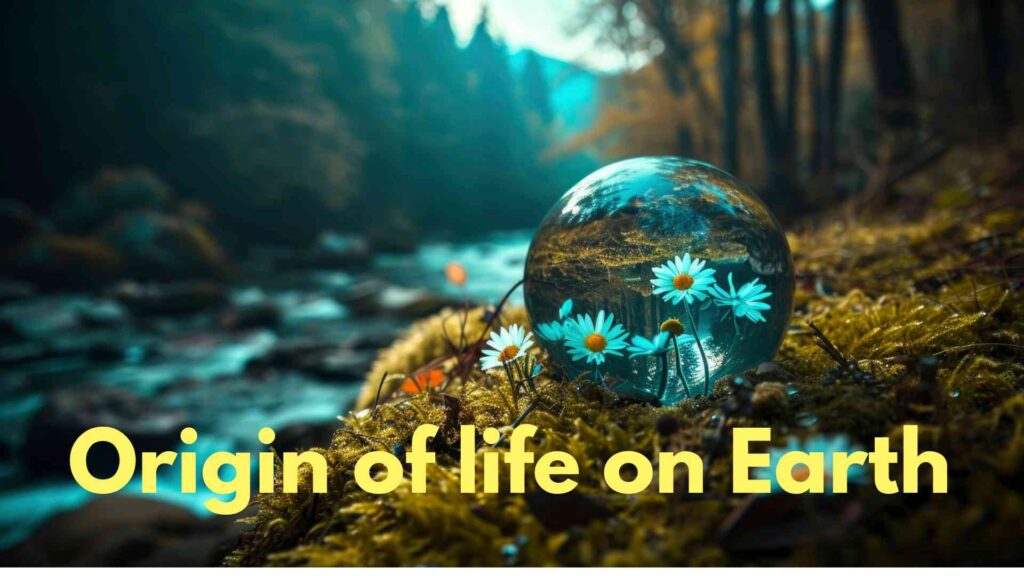

For generations, scientists and academics have been interested by the question of the origin of life on Earth. Examining a timeline spanning billions of years is necessary to comprehend the origin of life. This blog explores the significant eras and moments that influenced the beginnings and development of life on Earth.
1. Hadean Eon (4.6 to 4.0 billion years ago)
The Earth formed about 4.6 billion years ago, according to the Hadean Eon. In the interim:
• Meteorites and volcanic activity pounded the molten mass that was Earth.
• Hydrogen, helium, and other volcanic gases made up the atmosphere.
• As the earth cooled, water started to collect and form the first oceans.
This time, in spite of the difficult circumstances, laid the groundwork for the chemical reactions that would eventually give rise to life.
2. Archean Eon (4.0 to 2.5 billion years ago)
The first indications of life were seen by the Archean Eon.
• The first continental masses evolved as the Earth’s crust settled.
• Methane, ammonia, and other gasses predominated in the atmosphere, which was devoid of oxygen.
• The emergence of prokaryotes—simple, single-celled organisms—marked the beginning of life in the ocean.
Key event: The origin of prokaryotic Life
• Stromatolites, which are layered formations made of cyanobacteria, offer evidence of early life from approximately 3.5 billion years ago.
• Through their photosynthesis, these microbes gradually produced oxygen and changed the atmosphere.
3. Proterozoic Eon (2.5 billion to 541 million years ago)
There were major evolutionary advances during the Proterozoic Eon:
• The Great Oxidation Event resulted from a rise in atmospheric oxygen levels.
• Cells containing a nucleus, or eukaryotic cells, first appeared about 2 billion years ago.
• The emergence of multicellular life forms paved the way for sophisticated life.
Key event: The Ediacaran period (635 to 541 million years ago)
• The Ediacaran biota, a group of huge, multicellular organisms, initially emerged.
• Some of the earliest sophisticated life forms are represented by these soft-bodied organisms.
4. Phanerozoic Eon (541 million years ago to present)
Paleozoic, Mesozoic, and Cenozoic are the three eras that make up the Phanerozoic Eon. This eon includes the proliferating diversity of ecosystems and the proliferation of living forms.
Paleozoic Era (541 to 252 million years ago)
• Cambrian Period (541 to 485 million years ago): Rapid diversification of living forms occurred during the Cambrian Explosion, giving rise to numerous important animal groupings and the first vertebrates.
• Ordovician Period (485 to 444 million years ago): In addition to the first terrestrial plants emerging, marine life was thriving.
• Silurian period (444 to 419 million years ago): Vascular plants and arthropods led to the development of early terrestrial ecosystems.
• Devonian Period (419 to 359 million years ago): Known as the “Age of Fishes,” this era also witnessed the emergence of forests and the first amphibians.
• Carboniferous Period (359 to 299 million years ago): Large coal deposits were formed as a result of the evolution of extensive fern and early reptile forests.
• Permian Period (299 to 252 million years ago): The Permian saw the formation of Pangaea, a supercontinent, and the worst mass extinction in Earth’s history.
Mesozoic Era (252 to 66 million years ago)
• Triassic Period (252 to 201 million years ago): The earliest mammals and dinosaurs emerged.
• Jurassic Period (201 to 145 million years ago): The land was ruled by dinosaurs, and the earliest birds appeared.
• Cretaceous Period (145 to 66 million years ago): The emergence of flowering plants and the extinction of the dinosaurs marked the end of the era.
Cenozoic Era (66 million years ago to present)
• Paleogene Period (66 to 23 million years ago): As dinosaurs became extinct, mammals and birds diversified to take up the voids they left behind.
• Neogene Period (23 to 2.6 million years ago): Grasslands grew, and early hominids emerged.
• Quaternary Period (2.6 million years ago to present): marked by the emergence of Homo sapiens and recurrent glaciations.
Key Theories on Origin of Life
A number of scientific ideas make an effort to explain the origin of life:
• Primordial Soup Hypothesis: Implies that the origin of life may have occurred in shallow pools or deep-sea hydrothermal vents as a “soup” of organic molecules.
• RNA World Hypothesis: Asserts that the ability to transport genetic information and accelerate chemical reactions was first exhibited by RNA molecules.
• Hydrothermal Vent Hypothesis: Believes that the harsh conditions of hydrothermal vents on the ocean floor are where life first emerged.
Conclusion
The beginning of life on Earth is a complicated and diverse subject that spans multiple geological eras and billions of years. Every eon has added to the fabric of life as it exists today, from the molten surface of the Hadean Eon to the rich biodiversity of the Phanerozoic Eon. We can better comprehend the complex processes that have shaped our planet and the life it supports when we have a better understanding of this timeframe.
